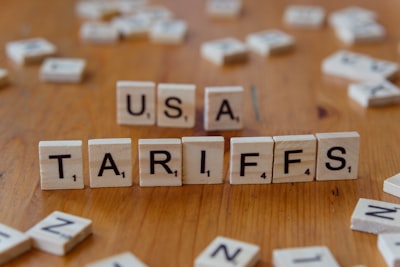Summary
President Donald Trump has escalated his tariff threats, sending letters to leaders of seven additional countries—including the Philippines, Sri Lanka, Moldova, Brunei, Algeria, Libya, and Iraq—warning of new tariffs on imports to the United States as high as 30% starting August 1, 2025. He has also indicated that Brazil may soon face similar tariffs, and has threatened 25% tariffs on Japan and South Korea. These actions follow a broader strategy, launched in April, of negotiating new trade deals backed by the threat of "reciprocal" tariffs. To date, few concrete agreements have resulted, and the stocks markets have responded indifferently.
Analysis
Trump’s approach, prioritizing aggressive negotiation under threat of punitive tariffs, reflects his enduring philosophy of bilateral trade as a zero-sum contest. The justification centers on America’s trade deficits and retaliatory policies against foreign trade barriers—arguments that frequently oversimplify the complexities of international economics. Notably, the countries targeted in this round account for less than 1% of US imports, which suggests limited immediate economic fallout, but the cumulative effect across all targeted nations could ripple into broader global supply chains and consumer prices.
From a political lens, the move is designed to signal toughness to both international partners and domestic supporters. Trump’s style relies on high visibility action—like public letters and deadlined ultimatums—to maintain control of the narrative. However, equating a mailed threat with a “deal,” as Trump suggested privately, invites skepticism from international partners, whose own retaliatory abilities and domestic pressures cannot be underestimated.
Missing from the reporting are voices from the targeted countries, the likely effects on American producers who rely on imported components, and analysis of the potential for a wider trade war. Though Trump frames his actions as reciprocal, many experts argue that such tit-for-tat tariff escalations tend to reduce overall trade, disrupt industries, and risk price hikes or economic slowdowns, even among the win-lose rhetoric.
Discussion
Why does this issue matter? Trade tariffs—and especially the threat of frequent, unpredictable changes—introduce uncertainty to the global economy. Businesses require stable rules for investment and supply planning, and aggressive tactics risk retaliatory spirals that rarely resolve quickly or painlessly. Moreover, focusing on trade deficits alone ignores the benefits that come from specialization, comparative advantage, and cooperation.
Parallel trends can be seen in historic periods of protectionism—such as the US’s 1930s Smoot-Hawley Tariff—when tit-for-tat escalations deepened the global depression. While current threats are not of the same magnitude, the underlying logics are similar. Today’s highly interconnected global economy means that disruption in even "small" trade partners can cascade widely, affecting jobs, prices, and geopolitical relationships.
Yet, Trump’s gambit taps into anxieties about globalization, perceived unfairness, and the desire for national economic resurgence. Will this yield durable change, or simply lead to higher prices and instability? The lack of successful deals to date and the unchanged market reactions suggest growing skepticism about the effectiveness of this strategy.
As tariffs set in and negotiations (or retaliations) proceed, the key questions are: How will partners respond? Will the administration secure better deals or be forced to backtrack? And most importantly, will ordinary workers and consumers benefit, or bear the brunt through higher costs and disrupted industries? The global economy is watching.

Comments
No comments yet. Be the first to comment!